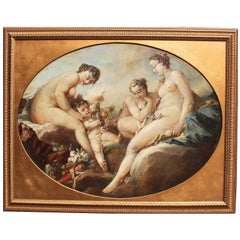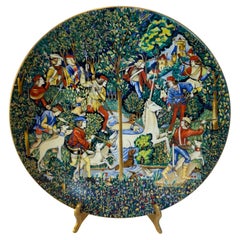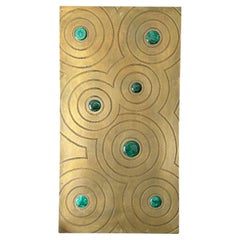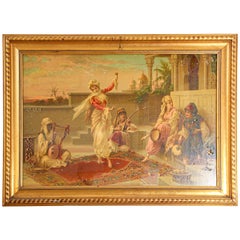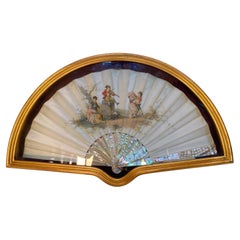California - Decorative Art
Late 19th Century French Romantic Antique California - Decorative Art
Canvas, Wood, Plywood
Mid-20th Century French Renaissance California - Decorative Art
Porcelain
Mid-20th Century European Mid-Century Modern California - Decorative Art
Pottery
21st Century and Contemporary American Hollywood Regency California - Decorative Art
Brass
Early 20th Century Italian Moorish California - Decorative Art
Paper
1850s French French Provincial Antique California - Decorative Art
Mother-of-Pearl
Late 20th Century German California - Decorative Art
Porcelain
1970s Dutch Mid-Century Modern Vintage California - Decorative Art
Steel
1960s Mexican Mid-Century Modern Vintage California - Decorative Art
Copper, Enamel
Late 20th Century German Post-Modern California - Decorative Art
Porcelain
Mid-20th Century Indian Anglo Raj California - Decorative Art
Marble
Mid-19th Century American Victorian Antique California - Decorative Art
Paper
1960s German Vintage California - Decorative Art
Ceramic
Early 20th Century Austrian California - Decorative Art
Canvas, Giltwood, Wood, Paint
Early 1700s Belgian Baroque Antique California - Decorative Art
Wool
Mid-20th Century Turkish Moorish California - Decorative Art
Ceramic
19th Century Italian Antique California - Decorative Art
1980s Spanish Post-Modern Vintage California - Decorative Art
Bronze
Mid-20th Century Italian California - Decorative Art
Wood, Paint
1940s American Vintage California - Decorative Art
Paper
Early 1900s French Belle Époque Antique California - Decorative Art
Glass, Giltwood, Paper
Mid-20th Century Moroccan Moorish California - Decorative Art
Canvas
Late 20th Century Moroccan Moorish California - Decorative Art
Ceramic
20th Century South African Rustic California - Decorative Art
Animal Skin
Late 18th Century Antique California - Decorative Art
Silk
18th Century Belgian Baroque Antique California - Decorative Art
Wool, Silk
19th Century Belgian Antique California - Decorative Art
Canvas
20th Century Mid-Century Modern California - Decorative Art
Ceramic
Late 20th Century German California - Decorative Art
Porcelain
Early 20th Century Chinese California - Decorative Art
Glass, Wood, Paper
Early 20th Century American American Classical California - Decorative Art
Masonite
1970s German Mid-Century Modern Vintage California - Decorative Art
Gold Leaf
20th Century North American California - Decorative Art
Canvas, Giltwood
Late 19th Century German Black Forest Antique California - Decorative Art
Giltwood, Canvas
Mid-20th Century Unknown Mid-Century Modern California - Decorative Art
Brass, Chrome
1950s Japanese Mid-Century Modern Vintage California - Decorative Art
Paper
20th Century American Belle Époque California - Decorative Art
Enamel
Mid-19th Century Italian Renaissance Revival Antique California - Decorative Art
Wood, Giltwood
19th Century Indian Moorish Antique California - Decorative Art
Brass
Early 19th Century Swedish Antique California - Decorative Art
Metal
Late 20th Century Moroccan Islamic California - Decorative Art
Metal
17th Century Italian Renaissance Antique California - Decorative Art
Canvas, Plaster, Wood, Giltwood
Early 20th Century American California - Decorative Art
Walnut
1890s Italian Belle Époque Antique California - Decorative Art
Majolica
Early 19th Century Italian Antique California - Decorative Art
Canvas
Mid-20th Century American Mid-Century Modern California - Decorative Art
Masonite
20th Century Egyptian Islamic California - Decorative Art
Ceramic
Mid-20th Century Italian Folk Art California - Decorative Art
Ceramic
1990s German Art Deco California - Decorative Art
Porcelain
1950s French Napoleon III Vintage California - Decorative Art
Paper
Early 20th Century Cameroonian Tribal California - Decorative Art
Shell, Beads
Mid-20th Century American Modern California - Decorative Art
Metal
Late 20th Century American Sporting Art California - Decorative Art
Paper
19th Century French Antique California - Decorative Art
Wood
1880s Scottish Other Antique California - Decorative Art
Paper
18th Century European Antique California - Decorative Art
Canvas, Wood, Paint
1740s Italian Antique California - Decorative Art
Wood
19th Century French Renaissance Revival Antique California - Decorative Art
Giltwood, Canvas
Late 19th Century English Antique California - Decorative Art
Canvas
19th Century Italian Baroque Revival Antique California - Decorative Art
Wood
Read More
At Colonial Williamsburg, Everything Old Is New Again
With the help of a new director, the Virginia institution's folk art and decorative arts museums are undergoing extensive upgrades.
New York’s Hirschl & Adler Showcases the American Workmanship and Design Panache of Neoclassical Treasures
The gallery's latest exhibition proves that museum-quality pieces entice and inspire, whether in traditional or more modern interiors.
